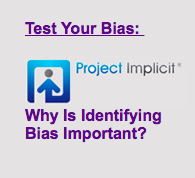In every environment, there is a standard set of norms upon which we all base our behaviors. There are particular behaviors which would seem out of place in certain environments, and which would cause us to pause, and reexamine what we may be seeing. Search Detect React® SDR training aims to augment one’s awareness to these potential abnormalities and to increase our ability to respond to them.

Urban Hunter Energy
The Urban Hunter™ characterizes anyone who is on the lookout for something. Regardless of the mission, any time a person is a part of a plan, they are on the lookout for their next cue, and project preparation signs of a hunter on the prowl. It is the search, the hunt, looking for something which distinguishes the Urban Hunter from the rest of the crowd. All people searching for something or someone – whether they are searching for their friend, their ride to work, or their next victim – will exhibit similar basic mental, physiological, and behavioral indicators. Those indicators are what we call the Urban Hunter Energy. In a train station for example, the Urban Hunter Energy will therefore reveal a teacher looking for the last student in her field trip group, a pick-pocketer searching for their next target, a would-be terrorist staking out the location for a future attack, and an undercover police officer patrolling the area, because they are all Urban Hunters, they are all searching for something. SDR-trained personnel would know how to disregard the teacher and the undercover cop, and identify the future pick-pocketer and the future terrorist as Urban Hunters searching for something with malicious intentions, in the stages before the crime was committed. SDR gives trainees the power of prevention by providing them with the capabilities to identify Urban Hunters, and auto-critique tools like the Artificial Gut Feeling® and the Bar of Normality® to determine who of the Urban Hunters has potential illicit intentions. SDR auto-critique mechanisms ensure that personnel have come to their decisions through a knowledge-based assessment of the relevant situational factors, rather than ethnic profiling or other biased judgements.
SDR provides practitioners with the capabilities to identify behavioral indicators rather than suspects, based on the SDR created, Bar of Normality®. The Bar of Normality® is an established definition of the routine conduct of a given area that, among other things, takes into consideration local cultural norms, key indicators, the purpose the area serves, and local legal guidelines. The Bar of Normality® is localized specifically for each environment and is altered in conjunction with fluctuating influential factors such as time of day, holidays, organized events, current events, etc. The Bar of Normality® is an operational tool with which to compare people’s conduct and demeanor so that abnormalities will inherently become obvious.
Searching for the Urban Hunter Energy sharpens one’s situational awareness by broadening their scope and refining their view of abnormal behavior, therefore increasing their effectiveness and relevancy to maintaining order, safety and security in their local environment. The search for the Urban Hunter broadens their scope by training practitioners to see their environment through a wider lens, open to preventing all types of crime committed by any person, without bias. It furthermore, refines their view of abnormal behavior to one that is apt to their specific environment by customizing the definition of abnormal behavior according to their place, time, and situational factors. Therefore, searching for the Urban Hunter with unique SDR auto-critique tools allows personnel to see their environment from a viewpoint that is relevant to keeping every local community safe and maintaining public order in each specific environment. Safer communities adds up to safer regions, which adds up to safer states, safer countries, and an overall safer society.
DE URBAN HUNTER EN DE BAR OF NORMALITY®
In iedere omgeving bestaat een standaard set van normen waarop we ons gedrag baseren. Bepaalde vormen van gedrag lijken niet op zijn plaats in bepaalde omgevingen en kunnen er toe leiden dat we stoppen om nog eens goed te kijken wat we zien. Search Detect React® SDR training is er op gericht om het bewustzijn van mensen te vergroten om deze potentiële afwijkingen te herkennen en om ons vermogen om er op te reageren te verbeteren.
Urban Hunter Energy
De Urban Hunter™ kenmerkt iemand die op zoek is naar iets. Wanneer een persoon deel uitmaakt van een plan, ongeacht het doel, zijn ze constant op zoek naar het volgende actiepunt en vertonen ze het gedrag van een jager die op de loer ligt. Het is deze zoektocht, de jacht, het zoeken naar iets, dat de Urban Hunter onderscheidt van de rest van de menigte. Alle mensen die op zoek zijn naar iets of iemand –of ze nu op zoek zijn naar een vriend, hun vervoersmiddel naar werk, of hun volgende slachtoffer- zullen dezelfde primaire mentale-, fysiologische- en gedragsindicatoren vertonen. Deze indicatoren noemen we de Urban Hunter Energy. In een treinstation bijvoorbeeld, zal de Urban Hunter Energy daarom een docent die op zoek is naar de laatste leerling in de groep onthullen, of een zakkenroller die op zoek is naar een volgend slachtoffer, een mogelijke terrorist die een locatie verkent voor een toekomstige aanslag en een undercover politieagent die de omgeving verkent, omdat ze allemaal Urban Hunters zijn die op zoek zijn naar iets. SDR getrainde medewerkers weten hoe ze de leraar en de undercover agent moeten negeren, terwijl ze de toekomstig zakkenroller en terrorist als Urban Hunters die op zoek zijn naar iets met slechte bedoelingen weten te identificeren, nog voordat er een misdrijf is gepleegd. SDR geeft cursisten de macht van preventie door hen te voorzien van de capaciteiten om Urban Hunters te identificeren en van autokritiek middelen zoals de Artificial Gut Feeling® en de Bar of Normality® om te bepalen of een Urban Hunter potentiële illegale bedoelingen heeft. De SDR autokritiek mechanismes zorgen er voor dat medewerkers tot een beslissing komen door een op kennis gebaseerde beoordeling van relevante situationele factoren, in plaats van door etnische profilering of andere werkwijzen gebaseerd op vooroordelen.
SDR stelt medewerkers in staat om in plaats van verdachten, gedragsindicatoren te identificeren, die zijn gebaseerd op de Bar of Normality®. De Bar of Normality® is een vaste definitie van het routinegedrag binnen een bepaald gebied dat, naast andere factoren, rekening houdt met lokale culturele normen, belangrijke indicatoren, het doel van de locatie en plaatselijke wetten en regelgeving. De Bar of Normality® wordt specifiek aangepast aan iedere omgeving en is onderhevig aan veranderingen door fluctuerende factoren zoals de tijd van de dag, vakanties, georganiseerde activiteiten, de actualiteit enz. De Bar of Normality® is een operationele maatstaf waaraan het gedrag en de acties van mensen kan worden gemeten en vergelen, zodat afwijkingen snel kunnen worden vastgesteld.
Het zoeken naar de Urban Hunter Energy verscherpt het bewustzijn van de omgeving door het verbreden van de reikwijdte en het verfijnen van de visie op afwijkend gedrag, waardoor de effectiviteit en relevantie voor het handhaven van de orde en veiligheid in een lokale omgeving wordt verhoogd. De zoektocht naar de Urban Hunter verruimt de visie door alle cursisten te trainen om door een brede lens en zonder vooroordelen naar hun omgeving te kijken en open te staan voor alle soorten criminaliteit die door een persoon kan worden gepleegd. Bovendien verfijnt het hun kijk op afwijkend gedrag dusdanig dat deze nu is afgesteld op de specifieke omgeving door de definitie van afwijkend gedrag aan te passen aan de plaats, tijd en situationele factoren. Daarom stelt het zoeken naar de Urban Hunter met de unieke SDR autokritiek middelen medewerkers in staat om hun omgeving te zien vanuit een standpunt dat relevant is voor het veilig houden van de omgeving en het handhaven van de openbare orde op iedere locatie. Veiligere gemeenschappen zorgen voor veiligere regio’s, wat neerkomt op veiligere provincies, veiliger landen, en een veiliger samenleving in het algemeen










